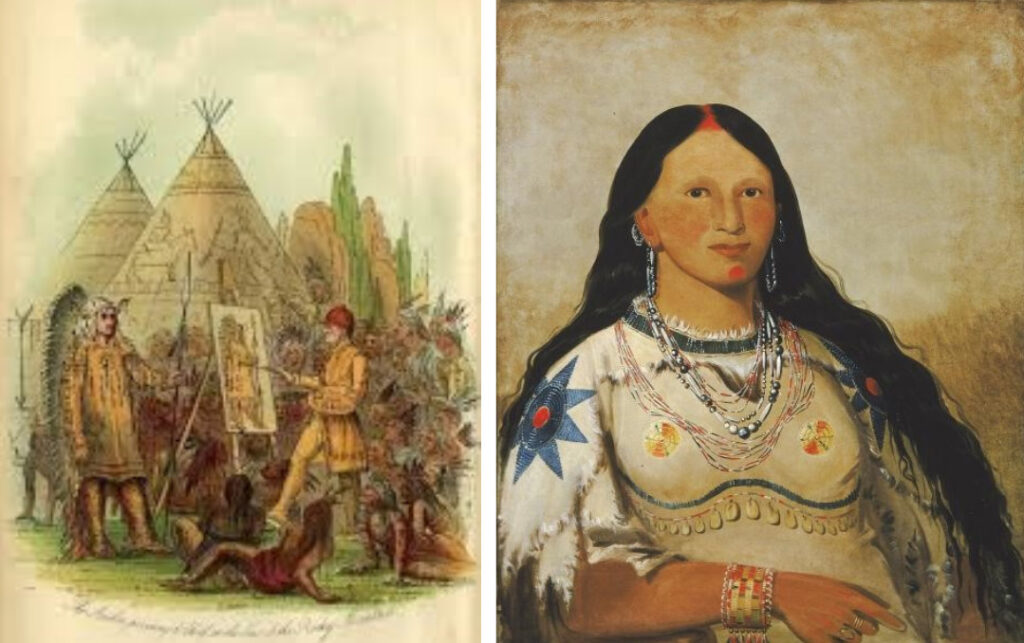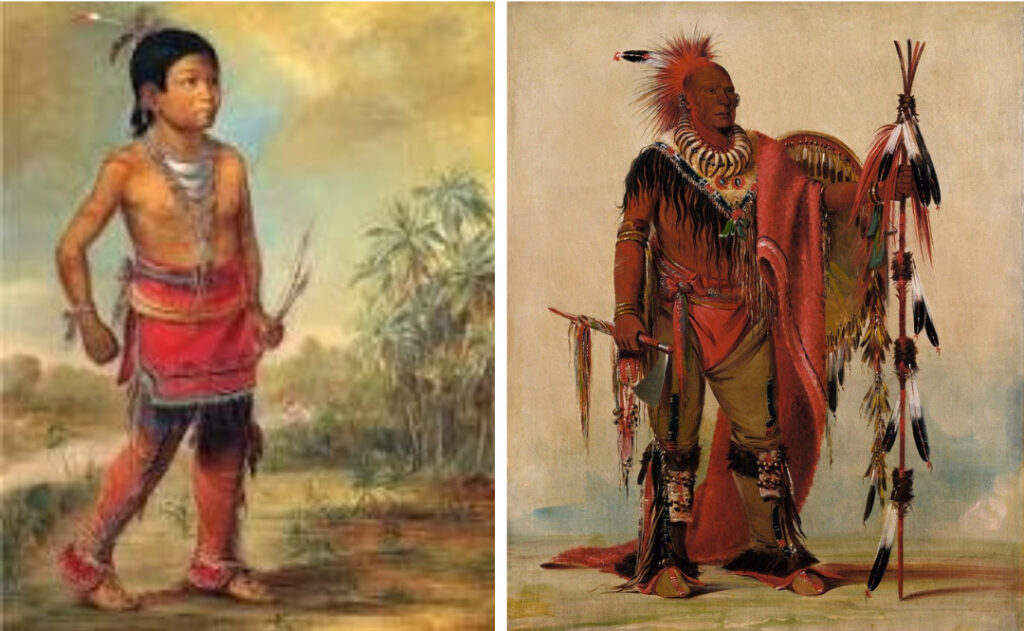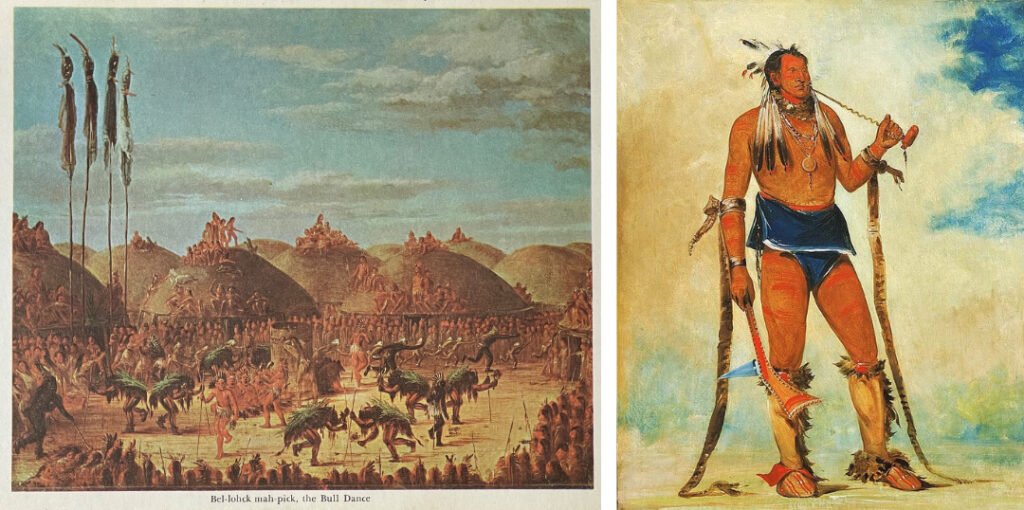George Catlin’s Travelling Museum – His Field Study
Our last three notes regarding cabinets of curiosities, professional collections and museums mostly had a Euro-centric perspective. Today, let us review a uniquely American museum, in which much of the action unfolded right here in the Midwest.
George Catlin was born in 1796, and grew up on a farm in New York state. As a young man he first followed his father’s wishes to become a lawyer and briefly practiced law. But his heart was in art, and during tedious courtroom cases he drew pencil sketches of “judges juries and culprits.” He soon abandoned law and took up painting as a profession, without any formal training, and became quite successful doing portraits.

Self-portrait of Catlin painting four bears, left, Mink, right. He also made an effort to paint women and children, but since they had nothing to prove, he was sometimes unsuccessful.
Still restless, he was looking for something more meaningful, when he chanced upon a delegation of Midwestern Indians vising Philadelphia, on their way to Washington. They were dressed in full regalia of feathers and war paint and were a healthy and defiant bunch of guys full of self-confidence. Catlin was well aware that the eastern tribes had already been decimated and the survivors were second-class citizens living in poverty. He was also 100 percent convinced that this would be the fate of all the American Tribes.
Suddenly his life’s mission became clear. He would document who these people were by visiting as many still-healthy tribes as possible, painting them and their lifestyles and landscapes, recording their stories and collecting their artifacts. He would then assemble all this into a travelling museum, visiting the eastern cities where he would tell their stories embellished with their portraits and artifacts.
As much as this sounds like mission impossible he actually did accomplish it. Steamboats had just begun to ply the upper Mississippi and Missouri rivers, and his wife Clara accompanied him to some of the tribes along these rivers. To more remote tribes he either travelled alone on horseback or canoed with a local trapper, or a few times accompanied an army patrol. Between 1830-1836 he visited 48 tribes, mostly in the Midwest. As winters came on, too cold to paint, he worked his way southward and his documentation includes the Seminoles of South Carolina.
Many of the tribal people were initially apprehensive that someone could steal their likeliness, and by association feared that he was stealing their spirit. But Catlin was a genuinely likeable person, picked up their languages quickly, and countered with the argument that they would live on forever in his paintings. In addition, most of the big chiefs were obligated to show that they were not afraid of a slight man armed a little brush, and soon other notables were lining up for the honor. Most of the natives had never seen a portrait before, and watching one created before their eyes left them in awe, and sometimes terrified, of the “great medicine man.”
Many of the chiefs were large powerfully built men who had earned their regalia and scars by defending their tribes territory, sometimes by force, sometimes by intimidation.
Catlin heard about one prairie chief who began his tribe’s buffalo hunts by creeping up on a herd on his hands and knees, covered with a wolf skin, and carrying a knife in his teeth. When close enough he would sprint, grab the horns of a fat cow, cut its throat and stampede the herd toward his hunters, who were waiting on their horses. Not a man to be messed with.
Catlin purchased and accepted gifts of clothing, moccasins, weapons, pipes, decorated robes, medicine bundles, snowshoes and even one teepee, all destined for his museum. He also recorded their stories, legends, dances and performances.
The guy in the lower left corner, covered with powdered charcoal, represents evil. He rushes into the gathering and terrorizes the women and children. The medicine man intervenes and the two fight it out with fierce magical incantations. When charcoal man begins loosing the duel the women and children retaliate and begin beating him with sticks and throwing dust in his face. They chase him out across the prairie and the village is safe from evil for another year.
By autumn 1836, Catlin had visited a sampling of tribes across the Midwest, had many hundreds of portraits and scenes prepared, hundreds of artifacts, and hundreds of stories to tell. Next week let’s join him as he takes his show on the road back east.




